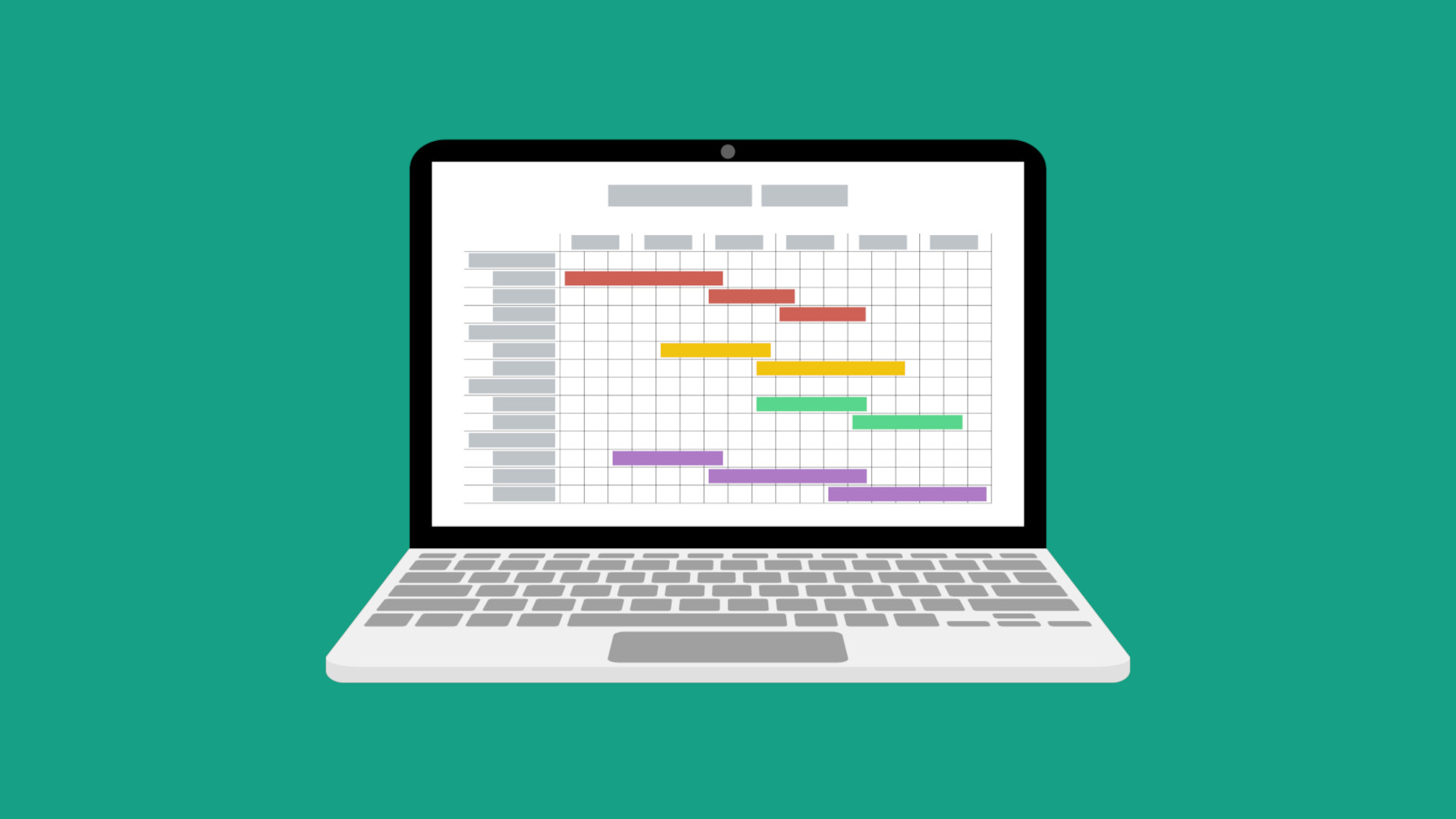How to choose a project management tool
Find the project management tool that's right for you

A good way to think about the average workday is to break it down into a series of projects. Some of these projects will be big, taking place over a series of weeks or months, and some can be completed in a few hours. Some will be worked on by entire teams and others will be personal endeavors. The best project management software can be used across a variety of different tasks and work for a number of different industries.
But with a broad spectrum of project management tools available and a variety of different use cases, picking the right one for your requirements isn’t always easy. That’s why we’ve put together this guide on how to choose a project management tool. There’s also bound to be some overlap with a CRM solution, so don’t forget to check out our list of the best CRM software available too. But if project management is your focus, this article should answer a few questions.
Reader Offer: Save 18% on Monday.com annual memberships
Monday.com is an easy-to-use and customizable work management platform, enabling teams of all sizes to plan, manage and centralize work. Get started now and boost your team's communication and productivity.
Preferred partner (What does this mean?)
A guide to choosing the right project management tool
What is project management?
First of all, it’s important to set out exactly what we mean by project management. Project management is the application of methodologies, processes, skills, and software to a particular project . This project will have clearly defined goals and a set time frame. This separates it from just management, which is an indefinite, ongoing process.
Project managers require a wide range of skills in order to drive and organize the skills of their team towards a particular outcome. Crucially, there are a number of software solutions that can help with this. We’ve outlined eight step to ensure you pick the right one.
Step 1: What are your business needs?

As with all forms of business software, it’s difficult to know exactly what type of solution you need unless you’ve got clear goals that you want to achieve. Projects can focus on a number of different industries, so you should start by outlining your objectives. That way, you can confidently say why you need project management software.
Although it’s fine to start with broad, big-picture goals like increasing revenue or boosting customer numbers, don’t forget to drill down into greater detail regarding your projects. These more specific project goals include improving communication between teams, meaning deadlines, acting on customer feedback, or improving collaboration.
Once you’ve outlined your business goals, it will become easier to rule out certain project management tools that aren’t relevant. This will make it leave you with a smaller pool of solutions to choose from, focusing your search and making it more likely that you’ll find a tool that suits your needs.
Step 2: What is your budget?
Before you commit to any business tool, whether it’s a an online marketing service or a cloud storage solution, you need to be clear around how much you have to spend. When working out your budget, remember to think long-term, not focusing too much on what your initial costs will be. This is especially important with cloud computing services, which often involve subscription costs paid out monthly or annually.
With a cloud-based project management tool, your initial outgoings are likely to be small, but it’s important to consider what your ongoing costs might be. These can add up over time and make any solution expensive in the long-term. Also consider if your payment terms grant you access to the entire range of functionality that comes with your chosen project management tool. Some features may only be available to the higher payment tiers, for example.
Furthermore, don’t discount the great free project management software on the market. These aren’t necessarily inferior for being free of charge. Many solutions, from Trello to Zoho Projects, won’t cost a thing but still provide useful features like scheduling and automation.
Step 3: What are the challenges?

There’s no point in pretending that the adoption of a completely new business tool will be without any issues. Getting to grips with your new project management solution could be scuppered by any number of roadblocks. If you make a note of what these might be in advance, you’ll be better prepared for them.
For example, do your employees have the skills to use your project management tool without additional training or support? If not, what sort of investment can you commit to here - in terms of finances and time? How will your chosen project management tool fit with your existing IT stack? It’s likely that your employees are already used to certain ways of working and particular tools. Will your new project management fit in with these seamlessly or is there likely to be a bedding in period?
Integration is another potential challenge. Some project management tools, like Miro, cite their third-party integrations as one of their core strengths but you might find some issues with others. Often these integrations can be crucial to smooth-running projects including with well-known tools like Slack, Dropbox, and many others.
Step 4: What features will you need?
The features on offer with a project management tool can vary significantly, so it’s a good idea to compare your needs to the functionality of your prospective tool. Some of the more common features that come with a project management tool include timeline management, collaboration tools, progress tracking and analytics.
It’s important to remember, however, that you might not necessarily have access to a feature just because it is part of your chosen project management tool. It could be that the feature you’re interested in is only available if you commit to the higher pricing tiers. Automation, for example, is normally considered to be one of the more advance features with any project management tool - but it is also one of the most useful in terms of boosting productivity. It’s a feature that can free your employees of the most repetitive manual tasks so they can focus on adding value to your projects.
Step 5: How will you measure success?
Before you choose a project management tool, it’s a good idea to have an idea of how you will determine if it’s meeting your needs. Come up with some metrics to measure how successful your project management implementation is. KPIs you may want to focus on include time to completion, budget variance, customer satisfaction, and risk management effectiveness.
You also need to make sure you’re collecting enough data so you can be sure whether you’re meeting your KPIs or not. Don’t be too despondent if you don’t manage to meet them with the first project you assign to your project management software. It might mean that you need some more time to become familiar with the tool and it should still serve as a great oppiortunity to learn more about your ways of working.
Step 6: Take part in a trial
The best way to be sure you are choosing the right project management tool is to gain first-hand experience. The best way of doing this while protecting your finances is to sign up for a free trial. Many project management tools offer this, such as Liquid Planner, which allows users to enjoy the platform for 14 days before they commit to a longer contract.
Most of the time, the full range of features are available with the trial version of the project management tool. This means you can try the solution against a number of different scenarios to test its suitability for your business. Note whether the free trial is an opt-in or opt-out service as this will determine if you’ll automatically be charged when the trial period finishes. And make sure you have a way of evaluating whether the trial has been a success or nor before you start.
Step 7: Final research
You’re getting close to choosing your project management tool so it’s time to conduct some final bits of research. A good way to conclude your seearch is to ask individuals and businesses what they think of your prospective solution. Ask them to be as candid as possible, outlining the strengths and weaknesses of the tool.
As well as reaching out directly, have a look at online forums and review sites to gauge the general opinion around the project management platform. Make sure you seek detailed feedback too - not simply whether a solution gets the thumbs up or not. What doesn’t work well? Have you seen many updates or advancements since you began using the platform? These are all questions that could help inform your choice of project management solution.
Step 8: Make your decision
Once you've completed all the necessary due diligence is time to take the plunge and pick a project management tool. Take all your research, internal evaluations, stakeholder opinions, and more, collating everything so you can determine which platform is the best fit for your needs.
However, the decision you make doesn’t need to be a long-term commitment. Monitor how the project management solution is performing and don’t be afraid to switch to another platform if you start failing to meet your KPIs. The right project management tool may change based on your evolving aims. Make an informed decision but always leave it up for review.
Are you a pro? Subscribe to our newsletter
Sign up to the TechRadar Pro newsletter to get all the top news, opinion, features and guidance your business needs to succeed!
Barclay has been writing about technology for a decade, starting out as a freelancer with ITProPortal covering everything from London’s start-up scene to comparisons of the best cloud storage services. After that, he spent some time as the managing editor of an online outlet focusing on cloud computing, furthering his interest in virtualization, Big Data, and the Internet of Things.

